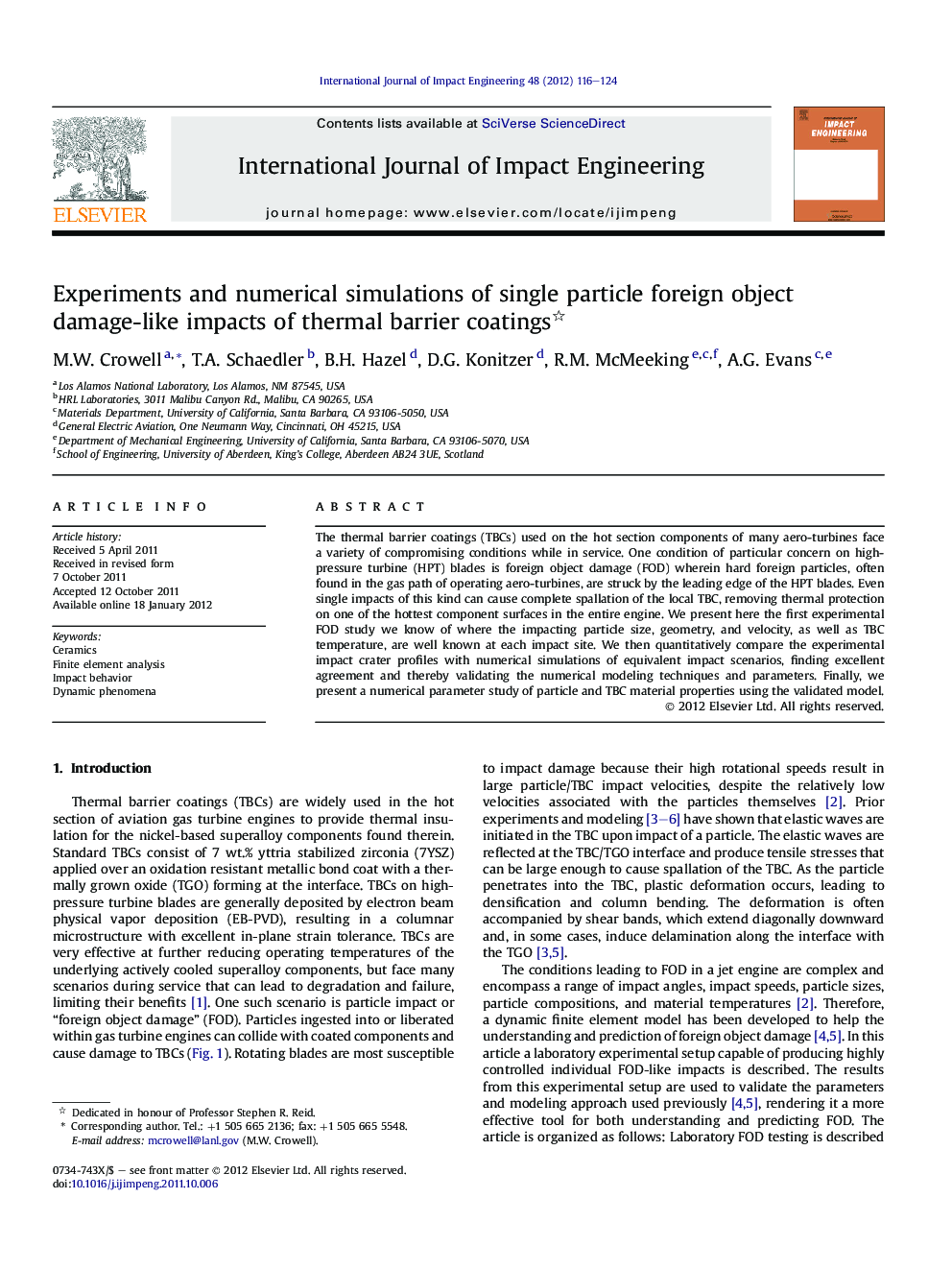| Article ID | Journal | Published Year | Pages | File Type |
|---|---|---|---|---|
| 783107 | International Journal of Impact Engineering | 2012 | 9 Pages |
The thermal barrier coatings (TBCs) used on the hot section components of many aero-turbines face a variety of compromising conditions while in service. One condition of particular concern on high-pressure turbine (HPT) blades is foreign object damage (FOD) wherein hard foreign particles, often found in the gas path of operating aero-turbines, are struck by the leading edge of the HPT blades. Even single impacts of this kind can cause complete spallation of the local TBC, removing thermal protection on one of the hottest component surfaces in the entire engine. We present here the first experimental FOD study we know of where the impacting particle size, geometry, and velocity, as well as TBC temperature, are well known at each impact site. We then quantitatively compare the experimental impact crater profiles with numerical simulations of equivalent impact scenarios, finding excellent agreement and thereby validating the numerical modeling techniques and parameters. Finally, we present a numerical parameter study of particle and TBC material properties using the validated model.
► Highly controlled experiments of single particle foreign object damage-like impacts of thermal barrier coatings. ► Companion finite element modeling with direct comparison to experimental results. ► Critical evaluation of material properties typically used in simulations of foreign object damage scenarios.
